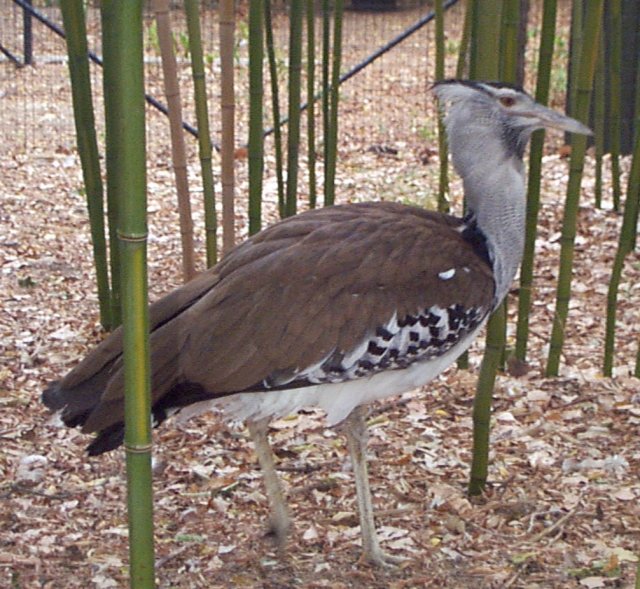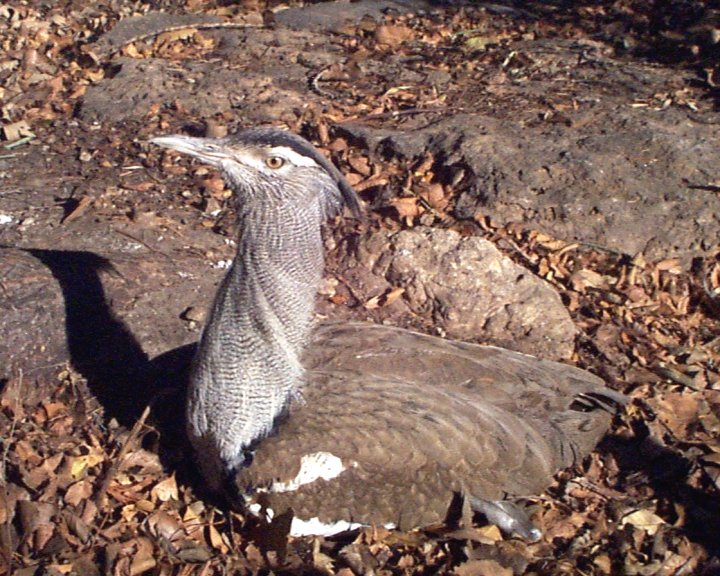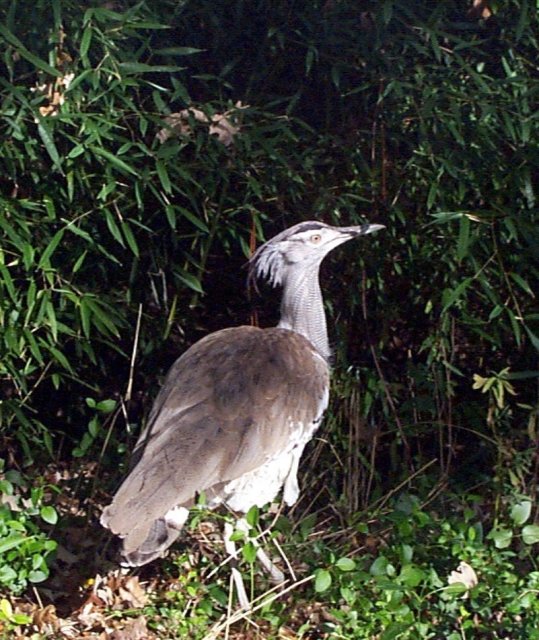Special anatomical, physiological
or behavioral adaptations:

Behavior:
They live in open plains. They are ground dwellers,
hence the name bustard, meaning birds that walk. They fly only
when necessary because of their weight. "It is thought that they have
reached a size and weight that represents the upper limit for flying
bird." It is even appearing that the Kori Bustards may become
categorized as the few large flightless birds like ostriches and emus,
which means they may be returning to an ancient ancestral form,
since they, and the other cranes, are descendants of large flig../../birds/craneline/cranes/korifemalesFWZ12212000a54.JPGhtless
predators. They have a long life span and breed slowly. They tend
to remain in the same area as long as the food source is good, then
they migrate as most animals do. "One bird was observed to defend
a termite nest from others, and then eat from it from time to time."

Reproduction:
Kori Bustards are considered to be a polygynous
species. During pre-mating, "the male will inflate its neck and trail its
wings as it dances before the female." Some male bustards even act further
aand ruffle all their feathers, appearing as a great white ball.
They may also bow toward the female while inflating the bill. Males
tend to pitch a booming sound too. By this time the male is noticed
by the female. Breeding males display this act either early in the day,
or late afternoon. "Males take no part in raising the young. Females remain
on the nest most of the time, leaving it only short interval, to feed."
Reproduction usually only occurs once a year lasting about 23-30 days.
When the female is laying her eggs, it is common for a mother not to create
a thick nest; she may even lay them on ground. |
